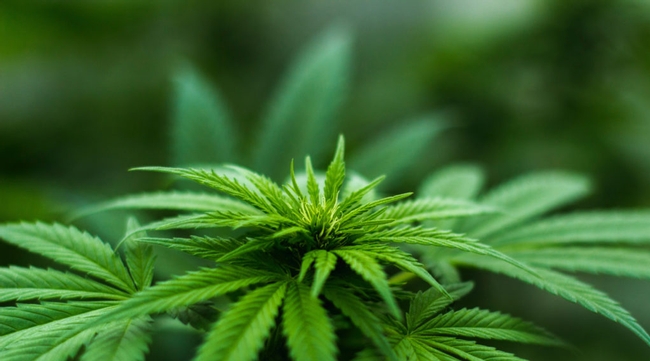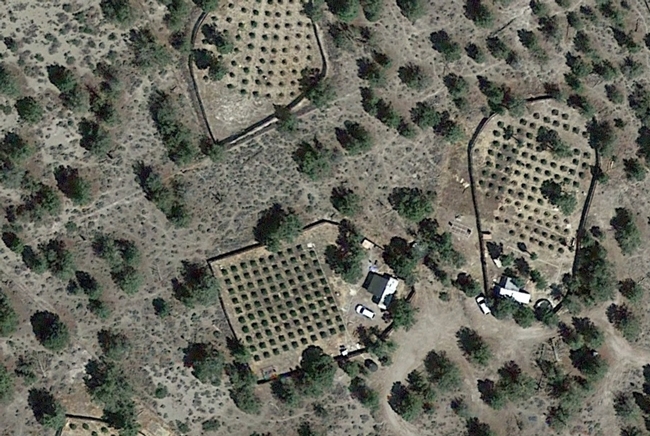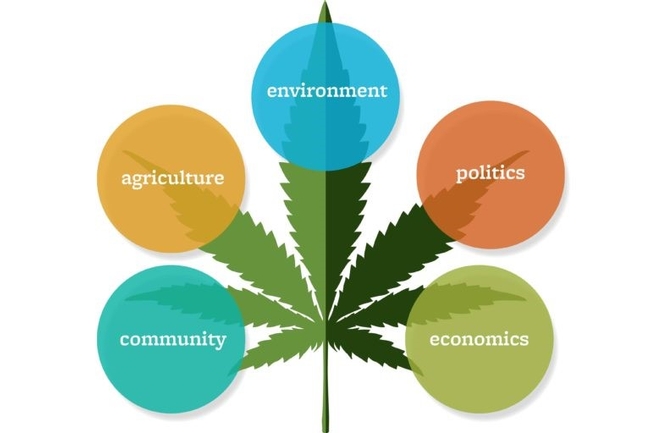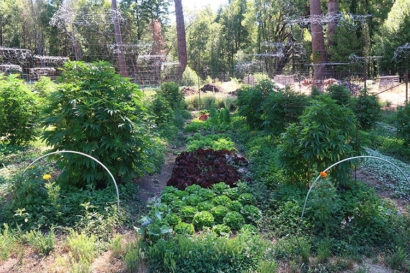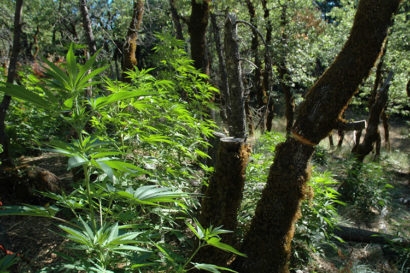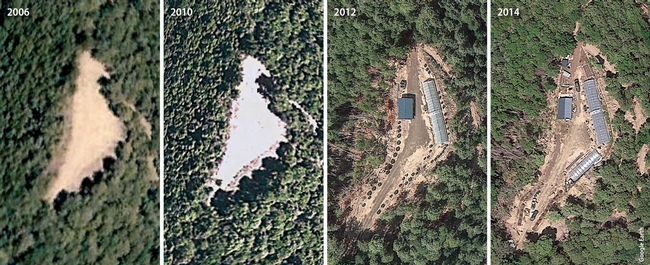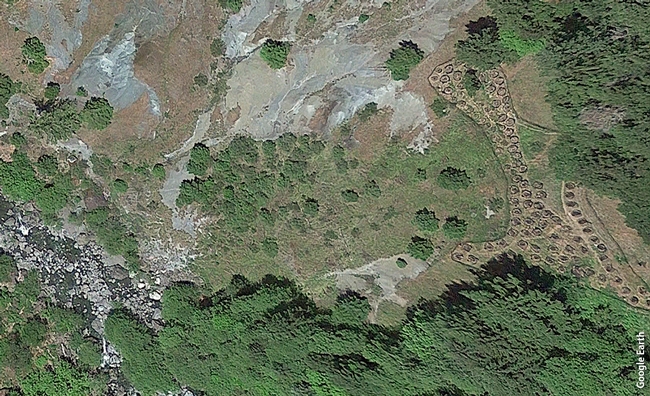Posts Tagged: cannabis
Cannabis growers asked to comment on permit process
California has legalized marijuana, but commercial cannabis growers have been slow to obtain the required state and local permits. To find out what deters them from complying with new laws, University of California scientists are asking cannabis growers to participate in a survey about their experiences with the regulated market.
“The majority of cannabis farmers are not joining the legal market and we want to know why,” said Van Butsic, UC Cooperative Extension specialist in the Department of Environmental Science, Policy & Management at UC Berkeley. “The objective is to identify barriers to joining the legal market.”
The researchers plan to share the results with policymakers as well as with the cannabis farming community and other researchers.
“Cannabis growers will have an opportunity to tell us what's wrong with the regulatory system so we can advise policymakers on changes they could make to improve compliance,” Butsic said.
Butsic estimates that less than one-third of cannabis growers in Humboldt County have completed the permit process. He says it's difficult to estimate statewide how many cannabis growers are operating illegally because laws vary from county to county and in many parts of the state, local governments don't allow cannabis growing.
One impact from cannabis growers not joining the regulated market is the state receives lower revenues from cultivation taxes.
Beginning on Jan. 1, 2018, two taxes went into effect: a cultivation tax on harvested cannabis that enters the commercial market and a 15% excise tax on purchases of cannabis and cannabis products.
Prop. 64, approved by voters in 2016, stated: “The revenues will provide funds to invest in public health programs that educate youth to prevent and treat serious substance abuse, train local law enforcement to enforce the new law with a focus on DUI enforcement, invest in communities to reduce the illicit market and create job opportunities, and provide for environmental cleanup and restoration of public lands damaged by illegal marijuana cultivation.”
Legalization was projected to create $1 billion annually in new state revenue, but initial tax revenue has been significantly lower. In the Governor's May 1 budget revision, cannabis cultivation and cannabis retail salesrevenues were projected at $288 million in 2018-19 and $359 million in 2019-20.
Compliance is important not only for tax revenue, but also for the environment, Butsic said. Research has shown that illegal cannabis production causes environmental damage, including rodenticide poisoning of forest wildlife.
“We know there are environmental impacts from non-permitted farms,” Butsic said. “The more growers are able to comply, the better off our environment will be.”
The survey can be anonymously filled out online at https://ucanr.edu/sites/compliance until Aug. 1. Cannabis growers who wish to provide more information can volunteer to give the researchers an interview.
New Cannabis Research Center to explore environmental, social impacts of legalization
Cannabis is unlike any other agricultural crop. Because of its circuitous history — once illegal to grow, and now legal but heavily regulated — cannabis has cast a unique footprint on the environment and the communities of farmers who grow it.
UC Berkeley's new Cannabis Research Center, announced today by a multidisciplinary team of faculty, will explore how cannabis production impacts the environment and society, and how these impacts will evolve under new regulations set in place by legalization.
While other research groups in the University of California are focusing on the individual and public health ramifications of cannabis, the center will be the first in the UC system to explore oft-overlooked dimensions of cannabis growth.
Berkeley News spoke with center co-directors Van Butsic and Ted Grantham, both assistant cooperative extension specialists in UC Berkeley's Department of Environmental Science, Policy and Management, to learn more about the state of cannabis production in California and the center's goals.
Berkeley News: What are some of the ecological and community impacts of cannabis production?
Ted Grantham: My research primarily focuses on the impacts of water use. These farms are taking water directly from streams or from groundwater wells connected to streams. Most farms are located in smaller watersheds, so even though the total amount of water taken can be small, it can have a big impact on streams that support sensitive species, such as salmon. Other potential ecological impacts relate to the use of pesticides and fertilizers, and habitat fragmentation from building roads and clearing trees.
The social scientists in the center are also concerned about equity and the sustainability of growing communities. Historically many growers would be characterized as small-scale, and there is concern that through this process of legalization, there is going to be a consolidation of cannabis production following models of industrial agriculture. We are trying to understand if there is a way to have cannabis cultivation continue to sustain local economies and rural communities, while limiting impacts to the environment.
How have legalization and associated regulations affected cannabis production so far?
Van Butsic: We're about a year into the formal legalization of recreational cannabis production and it has been a rocky start. There have been fewer participants in the market — producers — than were anticipated. Some growers appear to have gone out of production, many appear to remain in black market production and a relatively small subset of growers have gone through the process of compliance. And the grower community that has pursued legal production are very vocal about the issues and challenges facing their group. We have been trying to better understand what are the barriers to compliance and, ultimately, if there can be changes made in policies that can really help to catalyze this transition.
Cannabis production makes up only a very small percentage of agriculture in California. Why is it important to study its impacts in particular?
Van Butsic: This is a great system to study really big sustainability problems. How do we develop an agricultural system that's good for the environment and good for farmers? And cannabis is a really interesting spot to look at it because the regulations enforcing cannabis are totally different than in the rest of agriculture, so it would be really interesting to see if we get different outcomes.
How do regulations differ between cannabis production and the rest of agriculture?
Van Butsic: Cultivators need to be permitted by the state water board, by local government and by state government to grow cannabis legally, and there are environmental regulations in all three of those levels that they need to comply with that require a higher order of environmental performance than most other agricultural crops.
So you think that understanding these regulations might help you apply them to other types of agriculture?
Van Butsic: Exactly. Agriculture has been notoriously difficult to regulate in the past, and this is a system where the regulators got the upper hand, and so it will be interesting to see how the producers respond, and if cannabis producers can be profitable and meet these super-high environmental performance measures, then perhaps there is knowledge and technology that can transfer from the cannabis industry to the rest of agriculture that can improve environmental performance of food production.
We are working on a big project right now where we are mapping where all the farms are after the latest regulatory changes. We want to know, if we could take down these barriers and everybody became compliant, what would that mean for local water budgets, environmental health and for the amount of cannabis that would be produced?
Ted Grantham: This is a rapidly changing industry, and no one really knows where it is headed. Everyone is playing catch up to a certain extent, and we believe researchers have an important role in bringing independent scientific information to conversations around cannabis policy.
Cannabis crop expansion into forests threatens wildlife habitat
Planting cannabis for commercial production in remote locations is creating forest fragmentation, stream modification, soil erosion and landslides. Without land-use policies to limit its environmental footprint, the impacts of cannabis farming could get worse, according to a new study published in the November issue of Frontiers in Ecology and the Environment.
“Despite its small current footprint, the boom in cannabis agriculture poses a significant threat to our environment,” said co-author Van Butsic, a UC Cooperative Extension specialist in UC Agriculture and Natural Resources and the UC Berkeley Department of Environmental Science, Policy and Management. “To mitigate the anticipated environmental impacts, now is the time for policymakers and land-use planners to set regulations to manage the spatial pattern of cannabis expansion before crop production becomes established.”
Earlier studies have shown that cannabis production causes environmental damage, including rodenticide poisoning of forest mammals and dewatering of streams due to improper irrigation.
Cannabis, as either a medicinal or recreational drug, is now legal in more than 30 U.S. states and in several countries. In California, where medicinal marijuana has been legal since 1996, voters in November approved the sale and possession of one ounce of marijuana for recreational use. As a result, cannabis production is ramping up.
Effective policymaking for a new crop can be challenging without scientific data. In this study, Butsic and Ian J. Wang, assistant professor in the Department of Environmental Science, Policy and Management at UC Berkeley, and Jacob C. Brenner, associate professor in the Department of Environmental Studies and Sciences at Ithaca College in New York, present an approach for early assessment of landscape changes resulting from new agricultural activities.
Their approach uses per-unit-area analysis of landscape change. To study forest fragmentation in northern California, the scientists compared the effects of cannabis cultivation to those of timber harvest from 2000 to 2013 in Humboldt County.
Based on the size, shape and placement of the cannabis grows among 62 randomly selected watersheds, they quantified the impacts relative to those of timber harvest.
“We found that although timber has greater landscape impacts overall, cannabis causes far greater changes in key metrics on a per-unit-area basis,” Butsic said.
On a per-unit-area basis, the cannabis grows resulted in 1.5 times more forest loss and 2.5 times greater fragmentation of the landscape, breaking up large, contiguous forest into smaller patches and reducing wildlife habitat.
“The results show how important it is to consider environmental impacts at different scales,” Brenner said.
Current California law caps the size of outdoor cannabis production to 1 acre per parcel, to prohibit the development of industrial-scale cannabis operations outdoors. An unintended consequence of this law may be small dispersed cannabis grows that edge out wildlife.
While the long-term effects of cannabis cultivation on the environment are unknown, the researchers concluded that land management and agricultural policy informed by further research may reduce these threats in California and in other states and countries where cannabis production can be regulated.
“Studies like this one have the potential to directly inform local land-use policy and state environmental regulation,” Brenner said. “It's exciting to be a part of this research because it is capturing a human-environment phenomenon at the moment of its emergence.”
UC Cooperative Extension reaching out to NorCal cannabis growers
UC Cooperative Extension in Humboldt County has invited local cannabis farmers to meetings this week to discuss ways to reduce the industry's environmental impacts, reported Will Houston in the Eureka Times-Standard.
UC advisors and specialists will discuss future research aimed at reducing the impacts of pesticide and fertilizer use on cannabis grows.
At this week's meetings, Giraud said, "Mostly we just want to listen to folks who come to the meetings ideas and concerns. They're on the ground. We just want to know what could be planned with us."
The meetings will be from 6 to 8 p.m. Oct. 3 at Adriana's Restaurant, 850 Crescent Way, Arcata; and 12 to 2 p.m. Oct. 4 at Women's Civic Club, 477 Maple Lane, Garberville.
There will be brief presentations followed by group discussions. The UC participants include Van Butsic, UC Cooperative Extension land use science specialist at UC Berkeley; Kent Daane, UCCE biological control specialist at UC Berkeley; Houston Wilson, post-doctoral researcher at UC Berkeley; and Giraud.
The Buzz About Honey Bees and Marijuana
Extension apiculturist emeritus Eric Mussen of the UC Davis Department of Entomology and Nematology, "retired" in June of 2014 after 38 years of...
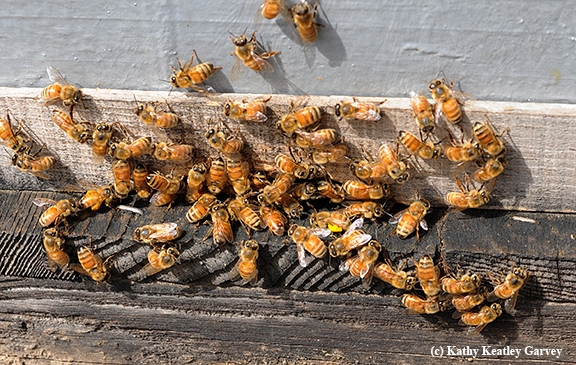
Honey bees laden with pollen returning to their colony. (Photo by Kathy Keatley Garvey)


